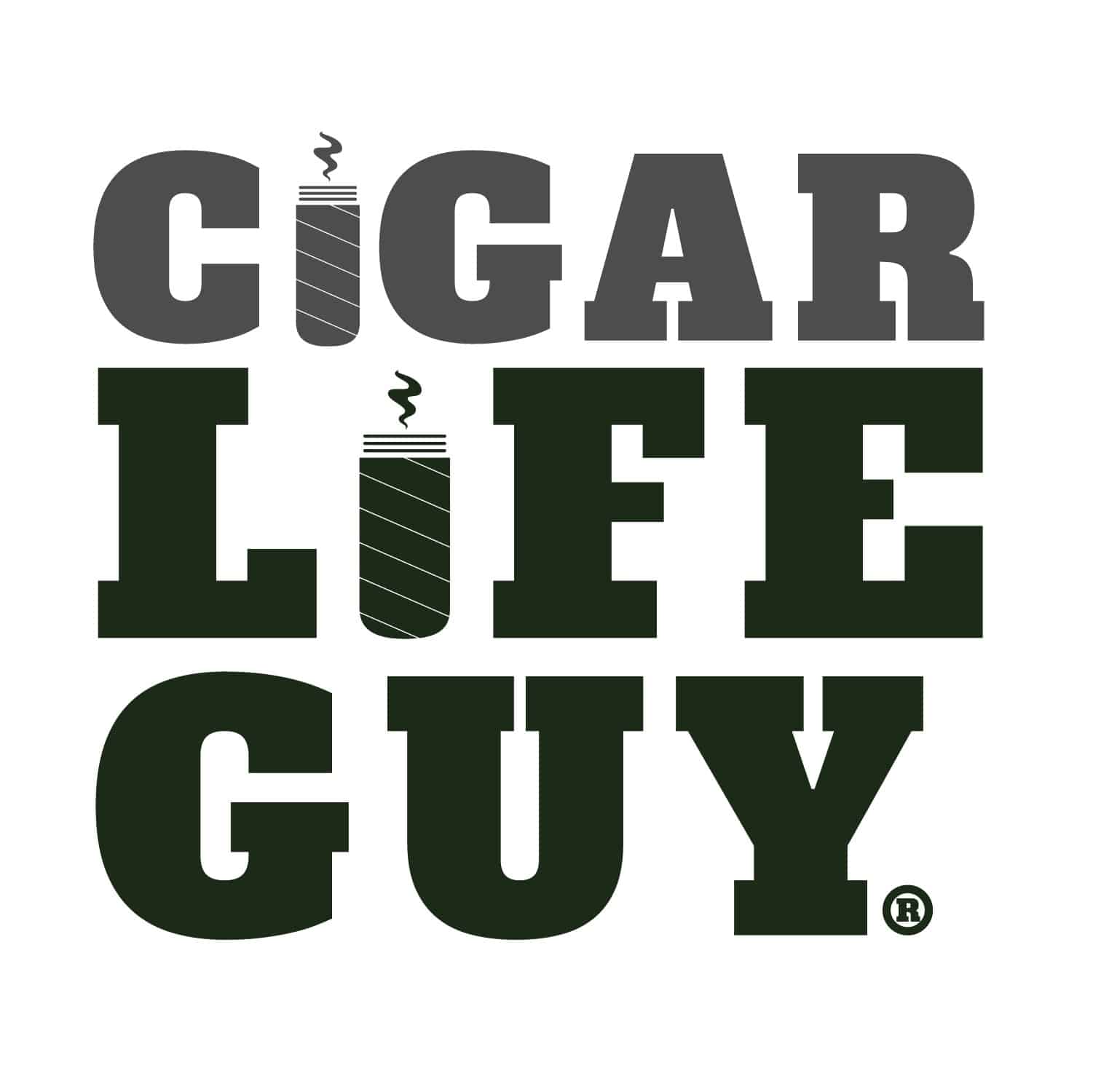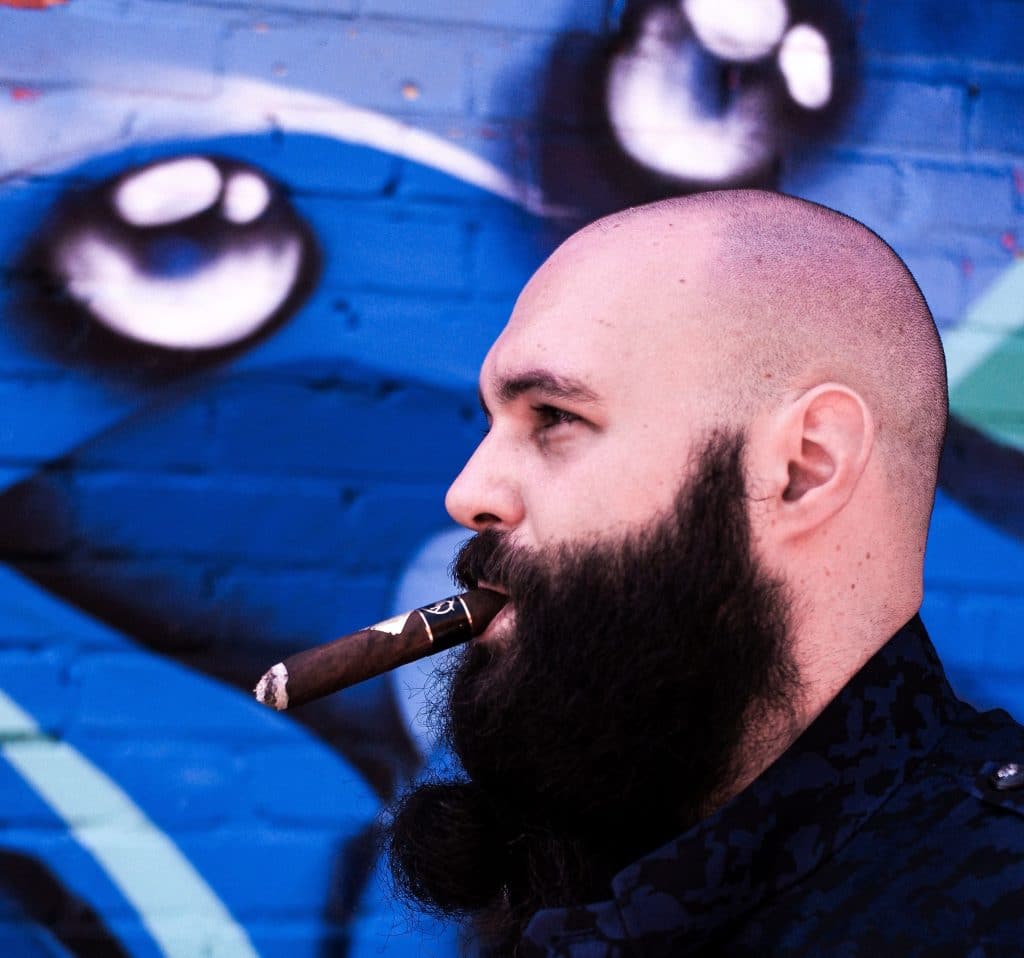It takes guts and a genuine love of cigars to drop everything and move to Honduras, but that’s exactly what Sebastien Decoppet, owner of Cavalier Geneve Cigars, did. Growing up in Switzerland near one of the cigar industry’s premier lines (Davidfoff) might have had some influence. Still, Decoppet is making his mark with his Diamond Gold Series and continues to add new blends to the Cavalier Geneve line. He talked with Cigar Life Guy about how he was never meant to sit behind a desk, paying homage to his late father, and how the cigar industry is sometimes misunderstood by those who have yet to live the cigar life.
Sebastien Decoppet: First Premium Cigar Experience
Cigar Life Guy: Tell me about your first premium cigar experience. (When was it? Who were you with? Where was it? What was the occasion?)
Sebastien Decoppet: I had my first cigar somewhere around twenty years old. I’m from Switzerland, and you were allowed to smoke at 16 and drink alcohol at 18, so it’s a bit different than what we have here now in the U.S. I didn’t have anybody in the family that smoked cigars. I stepped into the Davidoff store in Geneva, where I grew up, because I was interested in cigars. Why not? I wanted to see what it was, what it looked like. So, I don’t know if it was a No. 1 or No. 2, but one of the Classics from Davidoff at the time, and that’s how it started. I stepped out on the terrace, and I had that first cigar. It’s been a daily habit ever since.
From Switzerland to Honduras
Cigar Life Guy: You grew up in Switzerland. What was it like being around one of the industry’s benchmarks, Davidoff? How did it shape what you envision for Cavalier Geneve Cigars?
Sebastien Decoppet: It had a significant influence at the time. The market is very different in Europe from the U.S., and the influences are very different. I didn’t realize it, but Davidoff has had a significant influence. First of all, it was why Geneva became so crucial in the cigar world, and that was also why I knew very early on that Geneva had to be part of the name when I started. I think the visuals — the classicism — had a certain level of influence. It evolved from there.
The graphics, the visuals, and the brand’s identity grew and made its way for us, but it started with that white theory. I don’t want to say we took white because it was Davidoff’s “white.” That’s not what it was, but I guess it had an influence. Cavalier and the visuals are classic. I think that’s all probably due to the cigar culture there and how the Davidoff company shapes the industry in that part of the world.
Cigar Life Guy: You dropped everything to move to Honduras to learn the cigar industry before learning the language. What makes cigar life and the cigar community so unique?
Sebastien Decoppet: I didn’t know when I first moved, but I discovered the cigar industry checked all the boxes for me. I realized early on that I’m not one to sit behind a desk. What would have been my life if I hadn’t made that decision?
The cigar industry is versatile. It brings so many different people, so many different backgrounds, so many different cultures together. It is so welcoming. There is no conflict or few conflicts within the industry. It is a lot of cultures together that built what it is today.
The quality of the people — I’m talking about consumers and professionals — makes it enjoyable to work in. At the same time, the other side of it is the craftsmanship — the retro approach. Everything today is digital. You create value when you create things that you can’t touch, and that is something that disturbs me. I like that everything in the cigar industry is palpable. Everything is a hand that did something — a person who did something. We can see and feel it. It’s authentic craftsmanship. It’s an art in the creation process, and before it becomes a product, it is an art. So it’s a mix of the beauty of the people, the mix of all the cultures that come together, and the beauty of something still so real.
Sebastien Decoppet on Mistakes
Cigar Life Guy: What was your best mistake in those early years, and what did you learn from it?
Sebastien Decoppet: The best mistake I made was entering the U.S. market with a distributor, not understanding the U.S. market, and trying to treat it the same way I treated other countries internationally without understanding — something I fixed later. I thought it could be handled by a third party involved in the industry and would not require much of my time here (in the U.S.). There was a need for more understanding of how the U.S. worked and the actual cultural difference in the cigar industry compared to many other countries we work with internationally.
The beauty of it is that failing — we did fail — forced us to rethink the whole process and decide to move here (the U.S.) and brought us to open our operations in Central America instead of working with third parties. We had to make that mistake to understand the reality of this part of the world and the cigar industry and then discover for ourselves. Moving to the other side of the planet is very enriching, and getting to know so many different cultures within the same country. It’s an all-around win now, but it was a massive mistake at first.
Cigar Industry vs. Regulation Challenges
Cigar Life Guy: What is the cigar industry’s biggest challenge today?
Sebastien Decoppet: Regulations. Unfair regulations. The real reason why it’s unjust is that you’re just a cat underwater with it. Europe had something similar to the FDA a few years ago. There’s plain packaging, all sorts of different things, and the pushback here. We’re such a small industry. We should be thrown in with the luxury industry, in with craft watches. Because we’re tobacco, which comes from a plant, we’re thrown in with Big Tobacco. We barely have anything in common with Big Tobacco. We start with just the word “tobacco” and the plant. Even with that, we have such different variables and processes. We’re thrown into the same bucket, and we don’t have anywhere near the means that Big Tobacco has.
The best way to say it is an incapacity to communicate to the world what we are — we’re misunderstood.
The Cavalier Geneve Portfolio
Cigar Life Guy: Tell us a little about the Cavalier Geneve portfolio.
Sebastien Decoppet: I think the Cavelier portfolio has to be considered three pieces — one big umbrella with three brands under it. The original is the Cavelier Gold Diamond, which may be what we’re known for — the 24-karat gold band on the cigar. No gimmick. It is what it is. It’s eye candy if you want, but it’s what allowed us to go somewhere in this industry.
We didn’t come from this industry, and we don’t have a long line of roots here. Instead, we decided to take this route for ourselves. We had to make our way and be as visible as possible to lead to more acceptance globally.
The Gold Diamond, especially the White Series, is the heart. The Origin release is still the main line in our portfolio. It’s still the most efficient part of our engine. Then we have the Black II, the Viso, the Prospektor. All of these carry the Gold Diamond. Then we have a second Regional Exclusive, a pretty wide part of our portfolio. It goes from mild to medium to full. There are no powerhouses in what we do, but we always focus on flavors and complexity.
The second part, recently added, is now part of the Inner Circle brand. It’s the first time we released a new product without the Gold Diamond, and it was the first new brand we released. So, Inner Circle is a reflection of a much more classic line. It’s a reflection of where we come from. We wanted to ensure we acknowledged where we came from and the support we received.
When we started, we were close to going broke a lot of times, and then suddenly you blink and you have 100 employees. We realized that people decided on their own to support us. It was that first step when we went from a project to an actual group of companies. Inner Circle was an extension.
The “Inner Circle” sounds like a closed circle, but our Inner Circle was more of an extension of a “thank you” to those who supported us early on. From there, we released a second one called the Domaine Rouge. Domaine Rouge is a brand that looks back to the last years of my father and the factory. That was something my father was very proud of before he passed away. That’s why you’ll find 1956 on the boxes — the year he was born. It’s more of a homage to him. And then there is the Tres Delincuentes, which is more of that graphic, street art, grimy, down-to-earth line. It was linked more to the creative process in terms of art. Three wrappers. Three sizes.
Future Vision: Cavalier Geneve Cigars
Cigar Life Guy: What’s next from Cavalier Geneve Cigars?
Sebastien Decoppet: I hope a lot of things. We have some new releases. Earlier this week, I sent a press release regarding a new size, Petit No. 2, in our core line, so that’s Petit Torpedos. A new cigar will be revealed as a pre-release at PCA — a few more notable projects. We’re constantly challenging ourselves regarding cigars and expanding our warehouse. Our office is in Honduras right now, so that’s something we’re very proud of- seeing the team grow. One big target we have is to start growing our own tobacco. That’s going to be a big step.
Follow Sebastien on Instagram and check out the latest from Cavalier Geneve Cigars here.
Photo credit: Cavalier Geneve


